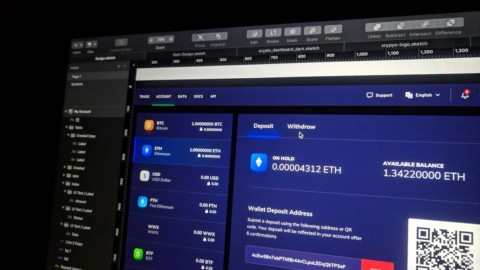Digital transformation projects are rapidly gaining momentum across virtually all industries as businesses recognise their potential to streamline operations and provide a competitive edge. Despite the growing popularity of such initiatives, however, many businesses are undermining these projects’ potential by failing to prioritise B2B integration methodologies, such as EDI and E-invoicing.
To help provide some clarity regarding current B2B integration trends and the main challenges facing those businesses embarking on digital transformation projects, I sat down to discuss these topics and more with ecosio Co-founder and EDI expert Philipp Liegl. In the following interview, Philipp shares his thoughts on what successful digital transformation looks like, and how businesses can unlock sustainable growth and build stronger, more collaborative partnerships.
————————————————————————
How do you predict B2B integration will evolve over the next five to ten years?
In the next few years we should see automated system-to-system communication replacing manual methods like email, PDF and paper. I also expect to see better visibility of EDI and e-invoicing directly within ERP systems, as companies move away from a siloed approach in search of a unified solution.
As more countries introduce e-invoicing mandates, procure-to-pay and order-to-cash processes will also have to change accordingly, which will result in challenges for businesses operating across diverse regulatory environments. At the same time, tax compliance and supply chain operations are converging as governments demand greater digitalisation and real-time reporting. For organisations of all sizes, success in this new landscape will depend on embracing automation, enhancing integration, and addressing compliance as a strategic priority.
Is a universal document exchange format ever likely to happen?
Thanks to the rise of government-mandated e-invoicing formats, there are certainly signs that standardisation is improving. For example, UBL is becoming widely adopted across Europe due to its alignment with EN 16931 and Peppol. Meanwhile, UBL’s popularity is also growing outside of the EU, with countries such as Saudi Arabia recently adopting UBL subsets.
Yet, much like separate dialects of the same language, even within UBL, regional adaptations persist. Whether it’s UBL, EDIFACT, or EDIFACT-subsets like EANCOM, global standards are rarely used in their “vanilla” form as they are too generic to meet specific business needs. Ultimately, total standardisation will realistically never happen for this reason.
How do you see B2B integration fitting into broader digital transformation strategies?
While there are obviously benefits to digitising any manual process, such as submitting timesheets or holiday requests, the processes which have the greatest impact are those that cross organisational boundaries—such as exchanges with suppliers, customers or governments.
By automating the exchange of key B2B messages, like orders, invoices and delivery notes, businesses can not only reduce errors, but also enhance resilience and provide real-time visibility into critical operations. In turn, this enables organisations to operate with greater speed and confidence moving forward. As such, in my opinion, EDI and B2B automation should be at the very centre of digital transformation efforts.
Following the recent wave of e-invoicing mandates, do you expect to see similar regulations covering other B2B processes soon?
Absolutely! The main goal of the recent e-invoicing mandates in Europe has been to reduce the “VAT gap” caused by fraud and underreporting. But e-invoicing is only one of a number of ways governments can tackle this. Over the coming years we will undoubtedly see governments introduce legislation concerning other tax-relevant documents which provide proof that transactions are legitimate, such as delivery notes and probably also purchase orders.
Just as businesses reconcile invoices with delivery and purchase order records to confirm the validity of transactions, governments aim to ensure compliance by tracking the entire process. Accordingly, expanding automation requirements beyond e-invoicing would not only strengthen tax collection efforts, but also minimise fraud and promote greater transparency and accountability across B2B operations.
Are people’s expectations changing when it comes to B2B integration?
Definitely! In the past, EDI was typically managed via local software, which was reliant on the deep technical knowledge of internal individuals. Over the last decade there has been a clear shift towards externally managed solutions that are deeply integrated into businesses’ ERP systems. Just like we don’t expect to have to establish the technical connection ourselves when we make a phone call, businesses today expect their providers to handle all technical B2B integration intricacies for them behind the scenes. Plus, with governments mandating automation of more and more B2B processes, we’re seeing a growing demand for providers to offer a broader range of services. Where previously businesses may have had one provider for tax compliance, another for EDI, and an in-house solution for e-invoicing, these businesses are now looking for one provider that can handle all at once.
What role do you see technologies such as AI and machine learning playing in digital transformation projects?
AI and machine learning are certainly helping to enhance efficiency and streamline B2B integration processes, particularly in areas like mapping creation and pattern recognition. For example, machine learning can be used to flag potential issues that wouldn’t otherwise have been detected – such as if a regular purchase order doesn’t arrive when expected – allowing for proactive escalation.
AI does face limitations, however, as it operates based on patterns, probabilities and learned behaviours, which can lack the precision necessary for specific compliance tasks. In critical areas like business document mapping creation, for example, where 100% accuracy is essential, pure reliance on AI may still be risky, as errors could have significant consequences. That might change with the further development of these technologies. One thing is for sure: 100% deterministic behaviour is a must with all compliance operations. As long as AI is not able to meet that 100%, in can only play a supportive role.
How do you think the increasing automation of B2B processes will impact the roles and skills required in internal teams?
Regarding skills, those handling B2B integration need to have technical expertise in three key areas. First, they have to understand the choreography of document exchanges, including the sequence and interdependencies between documents like purchase orders and invoices. Second, they must understand the diverse payload formats used across different regions and industries. Finally, they must have technical communication channel expertise in order to navigate the varying API standards and complex authentication mechanisms required in different countries.
When it comes to who handles B2B integration, organisations have three options: develop in-house expertise, hire external contractors to manage the process, or enlist the help of specialised providers. One thing is true no matter what option is opted for, however; successful automation requires a dedicated owner to coordinate resources, ensuring accountability and alignment. B2B integration can no longer be managed as a side task by unrelated roles—it demands focused leadership to drive efficiency and reliability.
What are the key B2B integration challenges likely to be for businesses embarking on digital transformation projects?
I would say there are four key challenges. The first, and the biggest, will always be master data. Without clean, consistent master data even the best integration systems will struggle to function effectively. If someone could somehow eliminate all master data issues this would definitely be worthy of a Nobel prize in my book!
The second challenge is sorting a B2B integration team, as B2B integration is very much a people-driven initiative and isn’t something that can be handled as a side task. You need dedicated team members in key areas like order-to-cash and purchase-to-pay to make it work.
The third major challenge is process alignment, as many ERP systems still rely on outdated outputs, such as PDFs or paper documents, which aren’t designed for EDI. Before they can fully embrace integration, businesses must modernise these processes.
Last, but not least, is ERP system compatibility. Successful B2B integration requires a seamless flow of data in and out of ERP systems. Unfortunately, older or off-the-shelf solutions, such as AS400-based platforms, often aren’t ready for this level of integration. Any business with such systems will have to upgrade them or find workarounds if they want to achieve significant improvements.
————————————————————————
Want to learn more about current EDI trends?
In our new report, “The Future of B2B Integration“, we explore the findings from our recent survey. In this survey we asked professionals working with B2B automation technologies across various industries to share their perspectives on everything from e-invoicing to the role of EDI in building business resilience.
Trends covered include the growing importance of EDI, building resilience through automation, e-invoicing, and cloud migration.






















